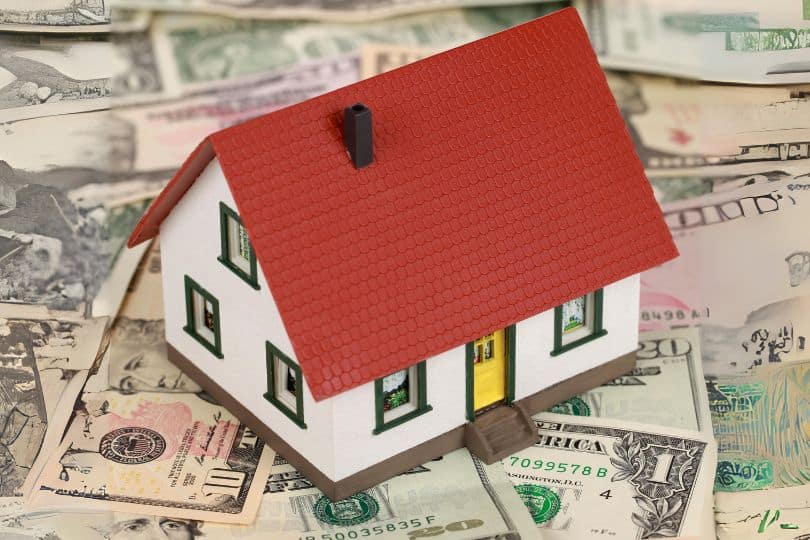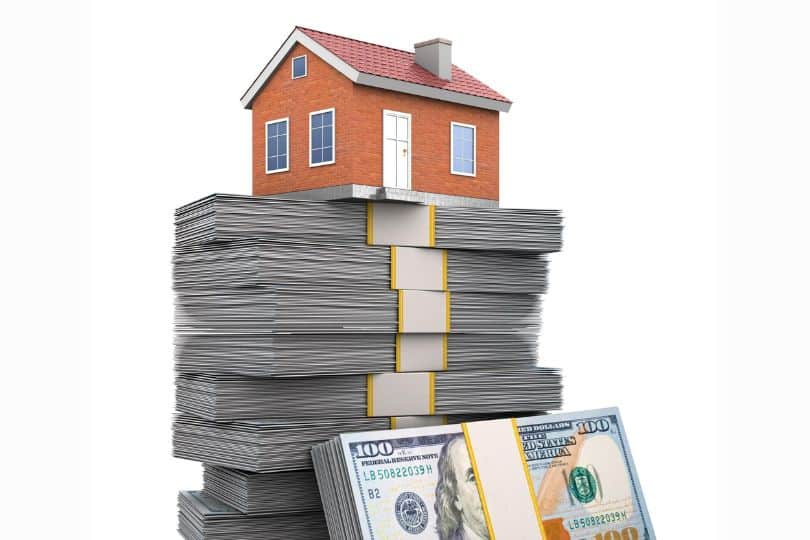REBATES NOT REGRETS! Are You Leaving Money on the Table?
Whether you are a builder or homeowner, we guarantee it will be worth your time to read this article—especially if you are not taking advantage of tax credits or incentives for making your home energy efficient.
1. TAX CREDITS FOR HOMEOWNERS
To encourage energy efficiency, the Internal Revenue Service offers substantial tax credits for homeowners who make qualifying updates to their homes. The scope of these credits has recently been broadened by the Inflation Reduction Act of 2022, offering homeowners and some renters the chance to reduce their tax burden.
Qualifying updates can include the installation of energy-efficient doors, windows, and skylights, as well as the addition of insulation and air-sealing systems. More substantial installations like central air conditioners, water heaters powered by natural gas, propane, or oil, and even biomass stoves and boilers are also covered. Notably, these improvements must pertain to an existing home or a renovation, not a new construction. Renters, as well as owners of second homes that serve as residences, are also eligible, though landlords are excluded from this benefit. The IRS urges all potential claimants to visit IRS.gov/homeenergy to review the full list of requirements and qualifications before making any purchases.
How to Claim a Tax Credit
To claim any of these credits, one must complete Form 5695, Residential Energy Credits, and file it with their tax return for the year in which the qualifying installations were made, not merely purchased. This form will reflect the Energy Efficient Home Improvement Credit and the Residential Clean Energy Credit as applicable.
It’s crucial to maintain thorough records of all related purchases and expenses. These records will be necessary when claiming your credit and can be vital in the event of an audit. For those using their homes for business, additional information and qualifications can be found on the IRS website.
How Much Money Are We Talking About?
Under the Energy Efficient Home Improvement Credit, after January 1, 2023, taxpayers may receive up to $3,200 for qualified improvements, equating to 30% of certain expenses. Annually, a maximum of $1,200 can be claimed for energy property costs and certain improvements, with specific caps on items like doors and windows. For advanced energy-efficient installations like heat pumps and biomass boilers, the annual cap increases to $2,000. The Residential Clean Energy Credit offers a 30% credit on the costs of new, qualified clean energy installations, including solar panels, wind turbines, and geothermal heat pumps. These installations must meet certain standards, like certifications for solar water heaters or Energy Star® requirements for geothermal pumps. This credit extends to both existing homes and new construction and has no dollar limit except for fuel cell properties. Moreover, it’s not an annual credit but can be claimed every tax year until it begins to phase out in 2033. Both credits are nonrefundable, meaning they can reduce your tax liability to zero but not provide a cash refund. However, any unused portion of the Residential Clean Energy Credit can be carried forward to future tax years.
The Energy Efficient Home Improvement Credit can directly reduce your tax liability by a percentage of the cost of the improvements, up to the specified limits. Similarly, the Residential Clean Energy Credit encourages the adoption of renewable energy sources by offering a significant percentage back in tax savings. The process of claiming these credits is straightforward, but it requires attention to detail and an understanding of the rules. These include which improvements qualify, how they must be installed, and the necessary certifications for clean energy equipment.
2. REBATES FOR BUILDERS
Purchasing a verified high-performance home comes with a host of benefits: significant savings on utility bills, enhanced construction quality, superior comfort, and improved indoor air quality, plus the invaluable peace of mind. For builders, there’s more to gain than just professional pride and market distinction as top-tier construction experts. They are also eligible for substantial rebates from organizations such as Magic Valley Electric Cooperative, AEP Texas, Texas Gas Service, and ENERGY STAR®. These rebates are incentives for builders dedicated to creating verified, energy-efficient homes that exceed minimum code standards. While high-performance building standards aren’t mandatory, builders who voluntarily commit to these standards and have their homes independently verified as “high-performance” are recognized as elite, energy-efficient builders. This recognition is not just a badge of honor; it’s a testament to their dedication to building superior homes. Ultimately, this commitment is a dual victory: it rewards the builder with both financial and reputational advantages and provides the homeowner with a home that promises energy savings and comfort for years to come.
Magic Valley Cooperative (MVEC) Rebates
The Magic Valley Cooperative (MVEC) is offering cash incentives to builders through the BUILT TO SAVE® program in MVEC communities. Starting at $200 for each verified home, these rebates are awarded on a first-come basis, with the potential for increased incentives for homes that surpass standard energy efficiency levels. Additionally, homes that achieve ENERGY STAR® certification garner a bonus rebate of $100 in addition to the $2,000 tax credit for the builder—per home—available with a qualified ENERGY STAR® home. For a home to be BUILT TO SAVE® verified, it must exceed minimum code energy requirements by at least 5%. This involves meeting rigorous construction standards, which are verified by independent RESNET home energy raters through detailed inspections, testing, and photographic evidence. Builders who participate in BUILT TO SAVE® not only benefit from rebates but also gain valuable exposure. Their work is promoted on the program’s website and through the Rio Grande Valley New Homes Guide’s multi-media channels, distinguishing them from those who build to just meet the minimum code. Builder participation is entirely voluntary, adding significance to the certification and providing homebuyers with assurance of the home’s superior quality and efficiency. Visit BuiltToSave.org for a list of participating builders. You can also see a list on pages __&__ in this magazine.
AEP TEXAS HIGH-PERFORMANCE HOME PROGRAM
Builders in AEP Texas’ service area, take note! The AEP Texas High-Performance Home Program is offering incentives for homes that stand out in energy efficiency. Builders who equip homes with 15.2 SEER2 or higher AC units can earn incentives ranging from $250 to $550, with additional bonuses for specific requirements than can total up to $1,500. The program’s incentives are designed to reward energy savings that are 5% above the Texas Baseline Reference Home. Not only do these homes need to save kilowatt-hours, but they also must fulfill elective standards. Every home is thoroughly inspected and tested by certified RESNET HERS Raters to ensure they meet the mark for reduced energy costs and enhanced indoor comfort and air quality. Joining the AEP Texas High-Performance Home Program is a voluntary and cost-free decision for builders. It’s an opportunity to be recognized for quality construction and commitment to energy efficiency. Interested builders can visit www.southtxsaves.com for more details and to view a roster of builders already reaping the benefits of the program. Make the smart move to build homes that are not only better for the environment but also offer substantial savings to homeowners.
TEXAS GAS SERVICE REBATES FOR HOMEOWNERS
Texas Gas Service provides a rebate program that benefits builders, developers, and homeowners. For those about to invest in a natural gas water heater, dryer, range, or a backup power generator, there’s an opportunity to save through attractive rebates. The amounts of these rebates differ depending on the specific natural gas product purchased. These savings are geared towards residential customers residing within most city limits in the Rio Grande Valley. Rebates are granted on a first-come, first-served basis, and are contingent on the availability of funds allocated for the program. For a detailed list of rebates and applicable products and how to apply for a rebate, visit www.TexasGasService.com. It’s important for builders to note that if their homes are sold with natural gas appliances installed, they are eligible for the rebates. Installing natural gas appliances in a home enhances the home’s value and will provide energy savings and additional benefits for the future homeowner.
FEDERAL ENERGY TAX CREDIT (Section 45L)
The Federal 45L Tax Credit Program is a boon for builders and homeowners involved in energy-efficient new construction. This initiative offers a tax credit of up to $2,000 per dwelling unit for properties that achieve significant energy savings in heating and cooling. To qualify, a residential unit must demonstrate a 50% reduction in heating and cooling energy usage compared to a standard home. A home qualified as ENERGY STAR® will meet the requirements for the 45L tax credit. This efficiency is achieved through improved insulation, windows, roofs, and energy-efficient heating and cooling systems. The program is not limited to new construction. Renovations and the conversion of non-residential buildings into homes are also eligible, provided they meet the energy criteria. This aspect of the program encourages the upgrading of older buildings to be more energy efficient. Obtaining the credit requires certification from a qualified third party, who inspects and tests the property to ensure it meets the required standards. The 45L Tax Credit not only supports environmentally friendly construction but also offers financial benefits. It’s an incentive for builders to adopt energy-saving practices and for homeowners to enjoy more energy-efficient living spaces. For those in the construction industry, leveraging this tax credit can lead to cost savings and a positive environmental impact. Go to www.irs.gov for more information.
3. FINAL INCENTIVE—BUT THE BEST OF ALL
The goal of all the above incentives is to improve the quality of life for homeowners by encouraging reduced energy usage and costs, and by having better built and more durable homes, healthier living environments, the protection of surely the largest investment we make in our lifetime, and lower carbon emissions for the sake of our planet and for the sake of generations of our children that will follow. When you think about it that way, you’ll understand why it’s fair to say that you may be leaving more than just money on the table if you don’t take advantage of these excellent incentives.
New Homes Guide Magazine
The latest new home trends, up-and-coming neighborhoods, and more.
© RGV New Homes Guide, 2024. Unauthorized use and/or duplication of this material without express and written permission from this site’s author and/or owner is strictly prohibited. Excerpts and links may be used, provided that full and clear credit is given to RGV New Homes Guide with appropriate and specific direction to the original content.









